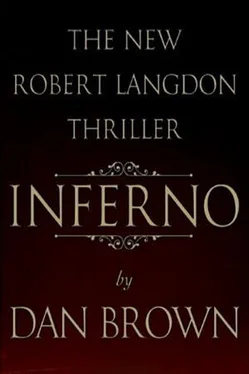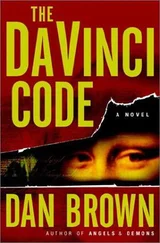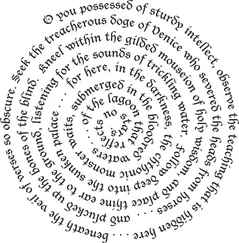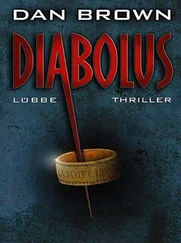After five turns, the two halves released. With a deep breath, Langdon gently pulled them apart. The gap between the halves widened, and a foam-rubber interior slid out. Langdon laid it on the table. The protective padding vaguely resembled an elongated Nerf football.
Here goes nothing.
Langdon gently folded back the top of the protective foam, finally revealing the object nestled inside.
Sienna stared down at the contents and cocked her head, looking puzzled. “Definitely not what I expected.”
Langdon had anticipated some kind of futuristic-looking vial, but the content of the biotube was anything but modern. The ornately carved object appeared to be made of ivory and was approximately the size of a roll of Life Savers.
“It looks old,” Sienna whispered. “Some kind of …”
“Cylinder seal,” Langdon told her, finally permitting himself to exhale.
Invented by the Sumerians in 3500 B.C., cylinder seals were the precursors to the intaglio form of printmaking. Carved with decorative images, a seal contained a hollow shaft, through which an axle pin was inserted so the carved drum could be rolled like a modern paint roller across wet clay or terra-cotta to “imprint” a recurring band of symbols, images, or text.
This particular seal, Langdon guessed, was undoubtedly quite rare and valuable, and yet he still couldn’t imagine why it would be locked in a titanium canister like some kind of bioweapon.
As Langdon delicately turned the seal in his fingers, he realized that this one bore an especially gruesome carving — a three-headed, horned Satan who was in the process of eating three different men at once, one man in each of his three mouths.
Pleasant.
Langdon’s eyes moved to seven letters carved beneath the devil. The ornate calligraphy was written in mirror image, as was all text on imprinting rollers, but Langdon had no trouble reading the letters — SALIGIA.
Sienna squinted at the text, reading it aloud. “Saligia?”
Langdon nodded, feeling a chill to hear the word spoken aloud. “It’s a Latin mnemonic invented by the Vatican in the Middle Ages to remind Christians of the Seven Deadly Sins. Saligia is an acronym for: superbia, avaritia, luxuria, invidia, gula, ira , and acedia .”
Sienna frowned. “Pride, greed, lust, envy, gluttony, wrath, and sloth.”
Langdon was impressed. “You know Latin.”
“I grew up Catholic. I know sin.”
Langdon managed a smile as he returned his gaze to the seal, wondering again why it had been locked in a biotube as if it were dangerous.
“I thought it was ivory,” Sienna said. “But it’s bone.” She slid the artifact into the sunlight and pointed to the lines on it. “Ivory forms in a diamond-shaped cross-hatching with translucent striations; bones form with these parallel striations and darkened pitting.”
Langdon gently picked up the seal and examined the carvings more closely. The original Sumerian seals had been carved with rudimentary figures and cuneiform. This seal, however, was much more elaborately carved. Medieval, Langdon guessed. Furthermore, the embellishments suggested an unsettling connection with his hallucinations.
Sienna eyed him with concern. “What is it?”
“Recurring theme,” Langdon said grimly, and motioned to one of the carvings on the seal. “See this three-headed, man-eating Satan? It’s a common image from the Middle Ages — an icon associated with the Black Death. The three gnashing mouths are symbolic of how efficiently the plague ate through the population.”
Sienna glanced uneasily at the biohazard symbol on the tube.
Allusions to the plague seemed to be occurring with more frequency this morning than Langdon cared to admit, and so it was with reluctance that he acknowledged a further connection. “ Saligia is representative of the collective sins of mankind … which, according to medieval religious indoctrination—”
“Was the reason God punished the world with the Black Death,” Sienna said, completing his thought.
“Yes.” Langdon paused, momentarily losing his train of thought. He had just noticed something about the cylinder that struck him as odd. Normally, a person could peer through a cylinder seal’s hollow center, as if through a section of empty pipe, but in this case, the shaft was blocked. There’s something inserted inside this bone. The end caught the light and shimmered.
“There’s something inside,” Langdon said. “And it looks like it’s made of glass.” He flipped the cylinder upside down to check the other end, and as he did so, a tiny object rattled inside, tumbling from one end of the bone to the other, like a ball bearing in a tube.
Langdon froze, and he heard Sienna let out a soft gasp beside him.
What the hell was that?!
“Did you hear that sound?” Sienna whispered.
Langdon nodded and carefully peered into the end of the canister. “The opening appears to be blocked by … something made of metal.” The cap of a test tube, maybe?
Sienna backed away. “Does it look … broken?”
“I don’t think so.” He carefully tipped the bone again to reexamine the glass end, and the rattling sound recurred. An instant later, the glass in the cylinder did something wholly unexpected.
It began to glow.
Sienna’s eyes opened wide. “Robert, stop! Don’t move!”
Langdon stood absolutely still, his hand in midair, holding the bone cylinder steady. Without a doubt, the glass at the end of the tube was emitting light … glowing as if the contents had suddenly awoken.
Quickly, the light inside faded back to black.
Sienna moved closer, breathing quickly. She tilted her head and studied the visible section of glass inside the bone.
“Tip it again,” she whispered. “Very slowly.”
Langdon gently turned the bone upside down. Again, a small object rattled the length of the bone and stopped.
“Once more,” she said. “Gently.”
Langdon repeated the process, and again the tube rattled. This time, the interior glass shimmered faintly, glowing again for an instant before it faded away.
“It’s got to be a test tube,” Sienna declared, “with an agitator ball.”
Langdon was familiar with the agitator balls used in spray-paint cans — submerged pellets that helped stir the paint when the can was shaken.
“It probably contains some kind of phosphorescent chemical compound,” Sienna said, “or a bioluminescent organism that glows when it’s stimulated.”
Langdon was having other ideas. While he had seen chemical glow sticks and even bioluminescent plankton that glowed when a boat churned up its habitat, he was nearly certain the cylinder in his hand contained neither of these things. He gently tipped the tube several more times, until it glowed, and then held the luminescent end over his palm. As expected, a faint reddish light appeared, projected onto his skin.
Nice to know a 208 IQ can be wrong sometimes.
“Watch this,” Langdon said, and began shaking the tube violently. The object inside rattled back and forth, faster and faster.
Sienna jumped back. “What are you doing!?”
Still shaking the tube, Langdon walked over to the light switch and flipped it off, plunging the kitchen into relative darkness. “It’s not a test tube inside,” he said, still shaking as hard as he could. “It’s a Faraday pointer.”
Langdon had once been given a similar device by one of his students — a laser pointer for lecturers who disliked wasting endless AAA batteries and didn’t mind the effort of shaking their pointer for a few seconds in order to transform their own kinetic energy into electricity on demand. When the device was agitated, a metal ball inside sailed back and forth across a series of paddles and powered a tiny generator. Apparently someone had decided to slide this particular pointer into a hollow, carved bone — an ancient skin to sheathe a modern electronic toy.
Читать дальше
Конец ознакомительного отрывка
Купить книгу










